Giovanni Mauro
The Urban Impact of AI: Modeling Feedback Loops in Next-Venue Recommendation
Apr 10, 2025Abstract:Next-venue recommender systems are increasingly embedded in location-based services, shaping individual mobility decisions in urban environments. While their predictive accuracy has been extensively studied, less attention has been paid to their systemic impact on urban dynamics. In this work, we introduce a simulation framework to model the human-AI feedback loop underpinning next-venue recommendation, capturing how algorithmic suggestions influence individual behavior, which in turn reshapes the data used to retrain the models. Our simulations, grounded in real-world mobility data, systematically explore the effects of algorithmic adoption across a range of recommendation strategies. We find that while recommender systems consistently increase individual-level diversity in visited venues, they may simultaneously amplify collective inequality by concentrating visits on a limited subset of popular places. This divergence extends to the structure of social co-location networks, revealing broader implications for urban accessibility and spatial segregation. Our framework operationalizes the feedback loop in next-venue recommendation and offers a novel lens through which to assess the societal impact of AI-assisted mobility-providing a computational tool to anticipate future risks, evaluate regulatory interventions, and inform the design of ethic algorithmic systems.
A survey on the impact of AI-based recommenders on human behaviours: methodologies, outcomes and future directions
Jun 29, 2024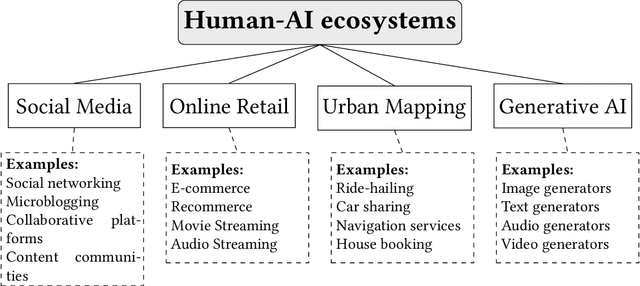
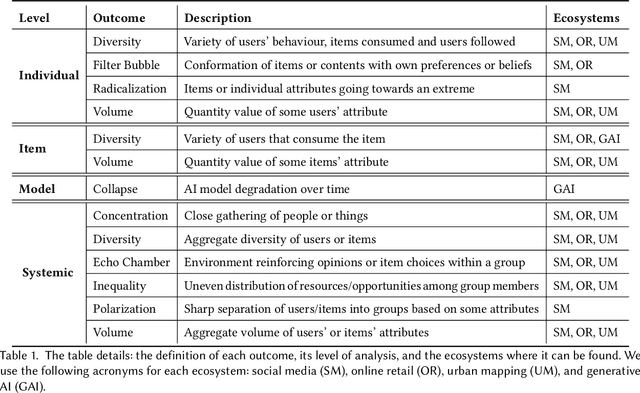

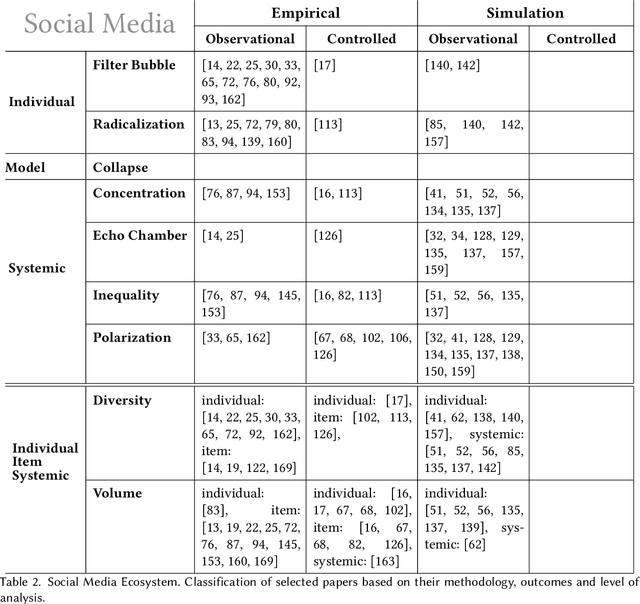
Abstract:Recommendation systems and assistants (in short, recommenders) are ubiquitous in online platforms and influence most actions of our day-to-day lives, suggesting items or providing solutions based on users' preferences or requests. This survey analyses the impact of recommenders in four human-AI ecosystems: social media, online retail, urban mapping and generative AI ecosystems. Its scope is to systematise a fast-growing field in which terminologies employed to classify methodologies and outcomes are fragmented and unsystematic. We follow the customary steps of qualitative systematic review, gathering 144 articles from different disciplines to develop a parsimonious taxonomy of: methodologies employed (empirical, simulation, observational, controlled), outcomes observed (concentration, model collapse, diversity, echo chamber, filter bubble, inequality, polarisation, radicalisation, volume), and their level of analysis (individual, item, model, and systemic). We systematically discuss all findings of our survey substantively and methodologically, highlighting also potential avenues for future research. This survey is addressed to scholars and practitioners interested in different human-AI ecosystems, policymakers and institutional stakeholders who want to understand better the measurable outcomes of recommenders, and tech companies who wish to obtain a systematic view of the impact of their recommenders.
Generating Synthetic Mobility Networks with Generative Adversarial Networks
Feb 22, 2022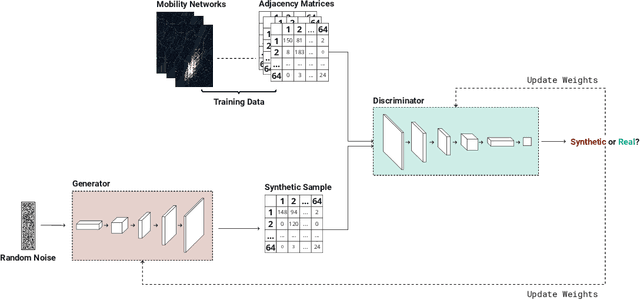



Abstract:The increasingly crucial role of human displacements in complex societal phenomena, such as traffic congestion, segregation, and the diffusion of epidemics, is attracting the interest of scientists from several disciplines. In this article, we address mobility network generation, i.e., generating a city's entire mobility network, a weighted directed graph in which nodes are geographic locations and weighted edges represent people's movements between those locations, thus describing the entire mobility set flows within a city. Our solution is MoGAN, a model based on Generative Adversarial Networks (GANs) to generate realistic mobility networks. We conduct extensive experiments on public datasets of bike and taxi rides to show that MoGAN outperforms the classical Gravity and Radiation models regarding the realism of the generated networks. Our model can be used for data augmentation and performing simulations and what-if analysis.
An interactive dashboard for searching and comparing soccer performance scores
May 11, 2021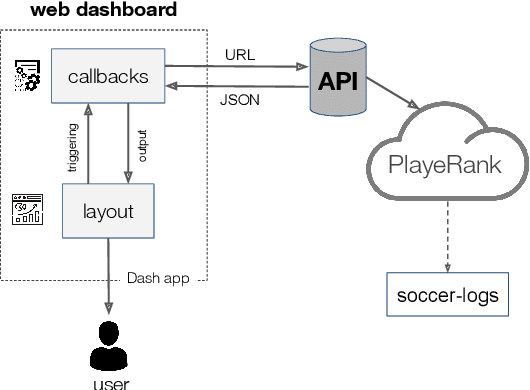
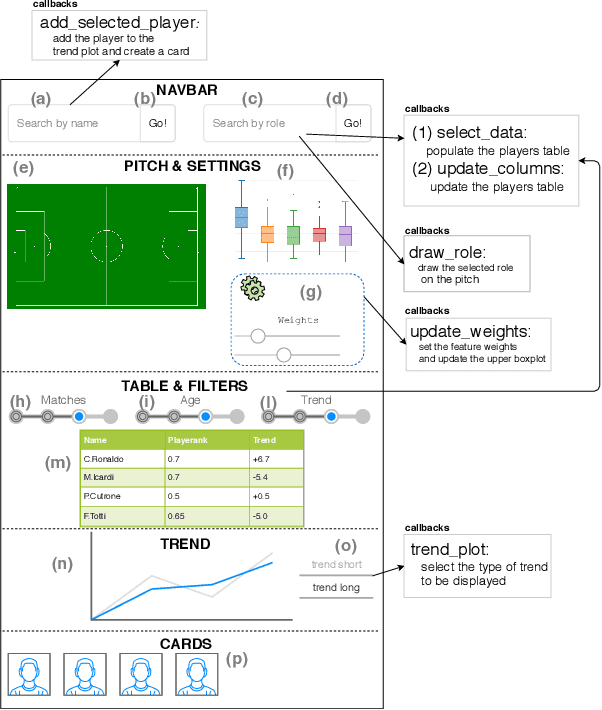
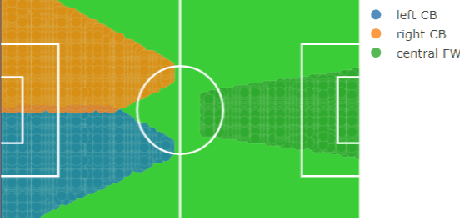
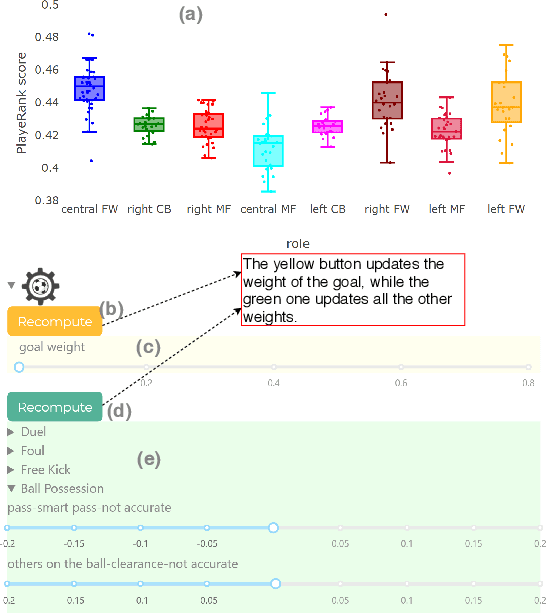
Abstract:The performance of soccer players is one of most discussed aspects by many actors in the soccer industry: from supporters to journalists, from coaches to talent scouts. Unfortunately, the dashboards available online provide no effective way to compare the evolution of the performance of players or to find players behaving similarly on the field. This paper describes the design of a web dashboard that interacts via APIs with a performance evaluation algorithm and provides graphical tools that allow the user to perform many tasks, such as to search or compare players by age, role or trend of growth in their performance, find similar players based on their pitching behavior, change the algorithm's parameters to obtain customized performance scores. We also describe an example of how a talent scout can interact with the dashboard to find young, promising talents.
 Add to Chrome
Add to Chrome Add to Firefox
Add to Firefox Add to Edge
Add to Edge